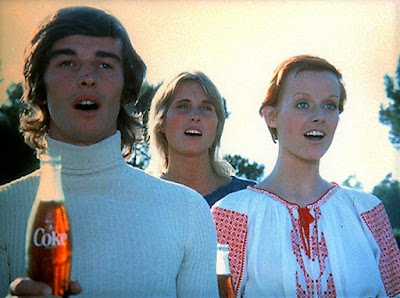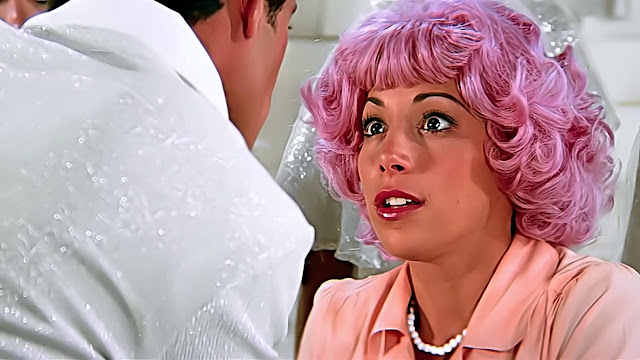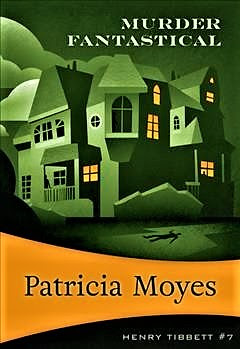"And to think that in, oh, say, twelve, sixteen years, you'll be down in Washington, after you do the bit in Harrisburg, of course. What are you thinking about, Milt--you going to hustle for state's attorney general, or you going right after the governor's house? Will it be the House first and then the Senate?"
"Beaten to death with a Coke bottle," Milt Weigh said. "My God."
"Hell of a thought, ain't it?" Balzic said.
"No I don't want your goddamn hanky, and no I'm not going to tell you where he is, because I don't know where. I gave him every cent I could spare. Sixty-two dollars. He took the car this morning, and that was the last I saw him. Satisfied?"
"No," Balzic said, sighing, "are you?"
She told him in Italian to fuck himself.
"That's not going to help. You got any ideas?"
--
The Rocksburg Railroad Murders (1971), by K. C. Constantine
 |
| I have a feeling we're not in Rocksburg anymore. |
One thing hasn't changed since 1971: Devious politicians, unworthy of the devotion which sadly deluded voters have placed in them, still parade across our long-suffering land. Rocksburg's police chief, Mario Balzic, has a low tolerance for their BS, and, if you feel the same way he does, the novels by
K. C. Constantine that detail his criminal investigations can be cathartic. But I recommend them for pure entertainment too.
Since 2016 political prognosticators routinely dub southwestern Pennsylvania "Trump Country," this region having proved essentials to enabling the celebrity real estate hustler turned Republican pol to squeak through to an electoral college presidential election victory over his Democratic opponent, Hillary Clinton. Trump beat Clinton by 44,000 votes in the state, a margin of seven-tenths of a percent.
Outside of eastern Pennsylvania, Clinton won merely three counties in the state, only one of which is in the southwestern region: Allegheny County, where Pittsburgh, the Steel City, is located. There Clinton won by 56-40 percent and 108,000 votes.
In the nearby borough of Mckees Rocks, the hometown of crime writer K. C. Constantine and the presumed model for the "Rocksburg" setting of his novels, Clinton won by an even larger margin, 66-31 percent, 1504 votes to 703. However,
Barack Obama's victory margin over
Mitt Romney in the 2012 presidential contest was a whopping 53%, so there was marked movement in Trump's direction even in this western PA Democratic citadel.
Still, with a
special election coming up in Pennsylvania's gerrymandered and quite Trump-friendly 18th district (he won there by 22%), which by design snakes around Pittsburgh proper, there's talk the local Democrat may actually pull out a win against the Republican, Trump-stumped in the President's inimitable fashion over the weekend. We'll see.
Since the 2016 presidential election there has been much talk about the decline of the coal, iron and steel industries in southwestern Pennsylvania, with the concomitant turning away from the Democratic party of white working class voters alienated with the party's focus on minorities and upwardly mobile suburbanites.
Certainly Mckees Rocks has seen an ample share of decline, its population having fallen, with the demise of its traditional industries, in every US census taken since 1940. This drop sharply accelerated between 1970 and 1980, when the town lost over a quarter of its population during the course of an economically disastrous decade. In 1930, four years before K. C. Constantine was born, Mckees Rocks had a population of over 18,000; today it's population is estimated to be under 6000, less than a third of what it once was. This is a more drastic diminution than what Ireland saw after the Potato Famine and decades of Irish flight (from 6.6 mil in 1841 to 3.2 mil in 1901--the island, incidentally, only recently surpassed its 1841 population).
When the first K. C. Constantine mystery,
The Rocksburg Railroad Murders, was published in 1971, however, Mckees Rocks still had a population of over 12,000; and the downbeat narrative of urban decay is not so pronounced in his Seventies books. What I have come away with in my reading of the early Rocksburg mysteries are impressions not so much of woeful economic failure but rather of an intricate and fascinating multi-cultural urban mosaic reflected in Rocksburg and of the human sympathy and interest in criminal psychology evinced by the author, conveyed through the person of his earthy and empathetic Serbo-Italian police chief, Mario Balzic. Though their series sleuths are not cops, the crime novels of the then contemporary authors
Ross Macdonald and
Joseph Hansen, the latter of whom preceded Constantine in print by a single year, to me seem similar to those by Constantine.
Although horrible things happen to people in the Mario Balzic books and people are apt to express themselves quite pungently (i.e., the f-word gets something of a workout, which likely made more of an impact in the early Seventies), the warmly conveyed environs of Rocksburg--Balzic's home life with his wife, mother and two daughters; his workplace with its multi-ethnic company of cops; and Muscotti's, the bar he patronizes--lend a sense of comfort to the stories.
Indeed, if there is such a thing as a cozy police procedural, this could be it, though perhaps some people will think I've flipped my lid in making this contention. Yet the books have got a cozy quality to them, at least for me, in that I find in Rocksburg a place to which I want to return again for additional visits. These are people there whom I want to meet again and places that I want to see. Life is hard in Rocksburg, and during murder investigations there are copious tears shed and some people who may be irreparably broken along the way; yet Chief Balzic sees us through all of it, as a classic sleuth is supposed to do. He gives us some sense of closure and consolation amidst the frightening chaos that threatens to engulf us all.
Perhaps this sense has something to do with my own family background, my mother having been born in Pennsylvania only three years earlier than K. C. Constantine--or, to call him by his true name, Carl Constantine Kosak.
Admittedly, my mother was born in a village in central Pennsylvania of only a little over 600 people, where the population has not changed much at all, one way or the other, in 150 years. The people there are mostly of German ancestry and most of their ancestors came to Pennsylvania in the 1700s, with nary a Slavic or Italian or Greek or Irish or African American in evidence or even much Scots-Irish presence that I can recall, though there are some of partly English heritage, with the inevitable preponderance of German intermixed. The old church is Lutheran, naturally, and the cemetery is filled with headstones with German names.
Old Pennsylvania Dutch traditions still were strong enough there in the Thirties that my mother's grandmother, who saw Lincoln's casket in Harrisburg when she was a girl and died on the eve of the Second World War, practiced the folk medicine (some said magic) known as
powwow. But there were coal mines nearby--though they never dominated the life of the village or led to any real growth there--and my mother's father worked in them, as did many neighbors.
So it may be that I'm naturally disposed to take an interest in G. K. Constantine's Rocksburg books, with their intimate ethnic immigrant working class setting, so far removed from the deliberately artificial gentrified world of
Carolyn Wells and mystery writers of her ilk from the classic era, as I've mentioned before. However, I maintain that it's more than that: the books simply are damn well written and bracingly authentic.
As mentioned in my last post, puzzle purists
Jacques Barzun and Wendell Hertig Taylor evince a high regard in their critical tome
A Catalogue of Crime for the actual detection in Constantine's second crime novel,
The Man Who Liked to Look at Himself (1972). But what about the author's first and his third books, which were smartly reissued together in one volume in the early 1980s by publisher
David R. Godine? To be honest, Barzun and Taylor, plot sticklers both, weren't so crazy about these two.
I'm much more positive about them than is the Barzun and Taylor
Catalogue, especially the third book,
The Blank Page, which to me seems unique in the Constantine corpus of crime fiction. (Constantine himself declared the book is terrible, but the late genre scholar
Robin Winks, a great admirer of Constantine who contributed an illuminating afterword to the excellent Godine twofer volume, begged to differ, pronouncing it the author's best. I suspect as an academic he had a bit of a bias in its favor, but I share his admiration for the book.)
The Rocksburg Railraod Murders is about Mario Balzic's investigation into the murder of local man John Andrasko (beaten to death with a Coca-Cola bottle--they were glass back then--so much for
teaching the world to sing in perfect harmony and buying the world a Coke and keeping it company).
The murdered man was attacked while at the railway station to take a train, and were this a
Freeman Wills Crofts story there would be a lot about trains and timetables. However, here Balzic quickly deduces the culprit, to a great extent for psychological reasons, and he spends the rest of the book trying to stop this person from killing again. So people wanting a "surprise" at the end are going to be disappointed. However, there's great local color and human interest and suspense as to how it will all turn out in the end.
 |
| Now there's a fan! |
In this one a local priest named Father Marrazo plays a big role and he's a fine character. There's also Myron Valcanas, Constantine's splendid, and invariably sozzled, defense attorney. Women don't yet seem to exist much in the way of professional capacities in this world, but they are well-conveyed characters when they appear, and some of them real tough birds too.
Then there are references to
President Nixon and
Spiro Agnew and
Dick Clark's American Bandstand and "sloppy" lasagna made with cottage cheese rather than ricotta. (My sister used to do this too.) And
Anna Magnani and
Peggy Lee ("
Is That All There Is?") and
Frankie Avalon. "
Oh Daddy. Frankie Avalon's ancient history," a daughter tells Balzic. That, young lady, was before "
Beauty School Dropout"!
Balzic is an interesting cop. He scoffs at the attempt of the ambitious local DA, Milt Weigh, to pin the blame for the crime on local hippy types (he wants to ride the drug issue to higher office), and for a page the police chief explains his theory as to why cops should not carry guns--which I must admit seems quaint today in our gun-happy (or perhaps unhappy) nation, as we talk about protecting our schools by arming teachers. No doubt in today's world Balzic would be getting denounced as a dangerous liberal in tweets and on TV by the likes of
Sean Hannity. But I think Balzic could handle the criticism.
His thoughts were a jumble. Nothing made sense. He felt the way he felt when he read a newspaper account of some seemingly isolated act of violence, when the reporter called the act "senseless." The word annoyed and angered him because he believed that no violence was truly senseless. It always made sense if you took the time to analyze it. He believed that was as true about the violence done upstairs as about any other violence he had known, except that everything about this violence did indeed appear senseless. There had been no robbery, no sound, no struggle, and he was willing to bet that there had been no sex....He was as sure of that as he was unsure what the piece of paper on her stomach meant. There was a message there, but one without words and one that therefore said everything at the same time it said nothing.
--
The Blank Page (1973), by K. C. Constantine
 |
waiting for Roethke
What will he tell us? |
The Blank Page, about the non-sexual murder of a non-entity community college student, Janet Pisula, found strangled and semi-nude in her room at a boarding house, a blank sheet of paper on her stomach, seems unique in the Balzic series in being more of a "literary" work. Maybe Constantine doesn't like the book because he feels it moved too far from a blue-collar milieu in the direction of the "classic" mystery. I myself found it a fascinating story.
The titular blank page lends a bookish quality to the story, appealing to those of us who like tricky plot tidbits like
Ellery Queen's cryptic dying messages. Then there is the initial setting, which definitely is the stuff of classic mystery: a boarding house run by a decayed gentlewoman spinster, Miss Cynthia Summer, in the old family mansion, built many decades past by her wealthy mine and factory owner father.
 |
Mckees Rocks home of the late Catherine Baker Knoll
former Democratic lieutenant governor of Pennsylvania
photo by Jonathan Denson; see his wonderful website,
Discovering Historic Pittsburgh
Preservation & Photography |
Miss Cynthia has managed to hang on to the house by having cut a deal with the local community college, to whom she donated most of the land that went with the house; but it will go to the college after her death, and in the meantime she has to cut coupons and take in students as lodgers.
With some tweaking we might have had a real modern classic detective novel, but as it stands
The Blank Page is quite an intriguing police procedural crime novel, with some piercing psychology, biting satire of academia and welcome additional personal details about Balzic. (We learn here about his father's fate.)
There's more with Father Marrazo and Mo Valcanas too. And, for the literary, there's mention of
Studs Lonigan,
Timon of Athens and
Theodore Roethke. Lots indeed about Roethke, "
the sanest lunatic of the last forty years."
This is a good one I believe, whatever Kosak thinks today: An intriguing and moving mystery about writing, which I think writers, or strivers of any sort, will especially appreciate.
Query: Could Constantine's "Balzic" be meant to suggest "Balzac"--i.e., French novelist
Honore de Balzac and his novel sequence
La Comedie Humaine? Like Balzac, Constantine with his Rocksburg tales presents his readers a detailed and "
unfiltered representation of society," though in Constantine's case, of course, there is always some measure of murder in the mix. We'll talk about this more soon, I hope!



















